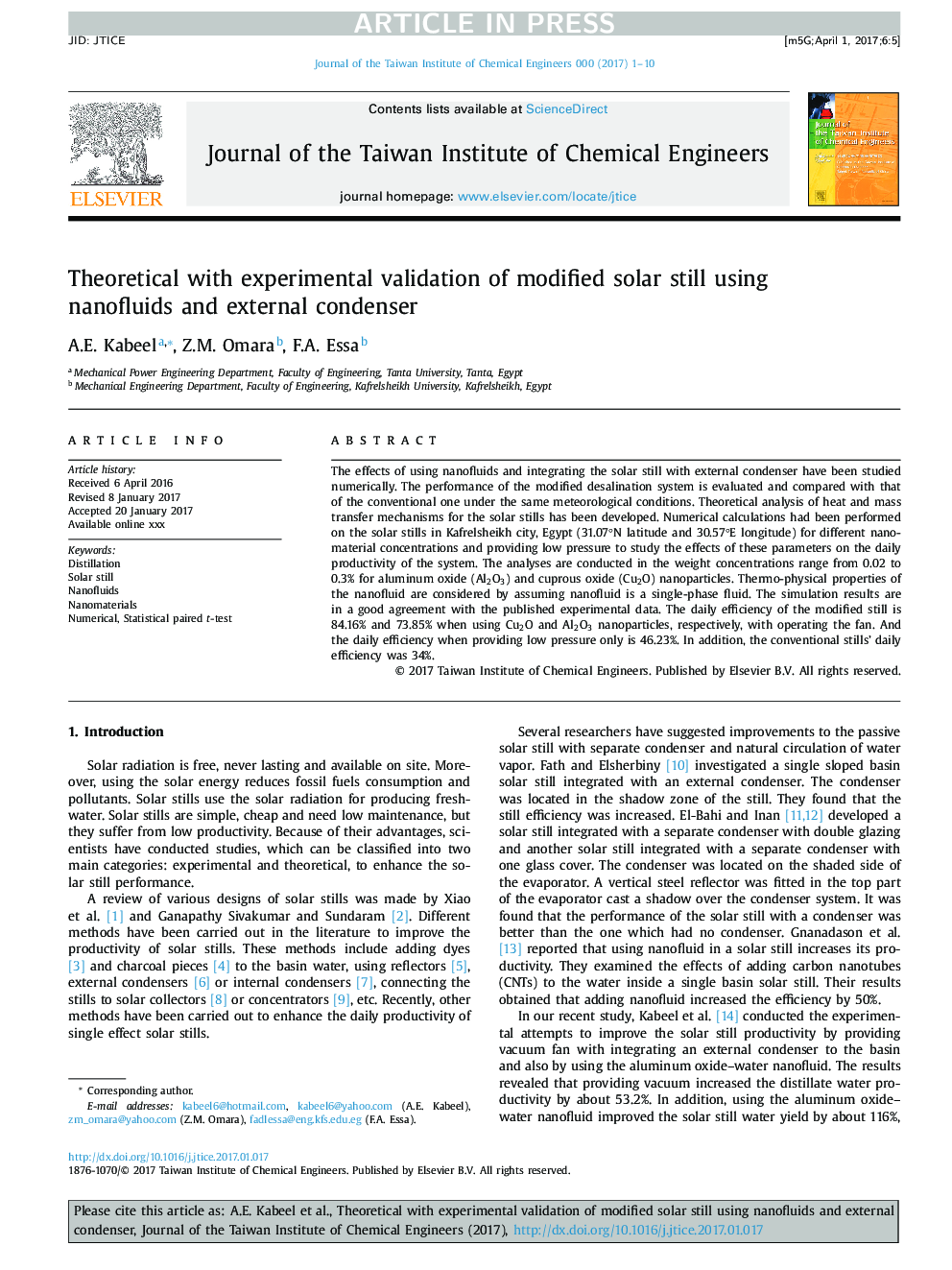| Article ID | Journal | Published Year | Pages | File Type |
|---|---|---|---|---|
| 4998718 | Journal of the Taiwan Institute of Chemical Engineers | 2017 | 10 Pages |
Abstract
The effects of using nanofluids and integrating the solar still with external condenser have been studied numerically. The performance of the modified desalination system is evaluated and compared with that of the conventional one under the same meteorological conditions. Theoretical analysis of heat and mass transfer mechanisms for the solar stills has been developed. Numerical calculations had been performed on the solar stills in Kafrelsheikh city, Egypt (31.07°N latitude and 30.57°E longitude) for different nanomaterial concentrations and providing low pressure to study the effects of these parameters on the daily productivity of the system. The analyses are conducted in the weight concentrations range from 0.02 to 0.3% for aluminum oxide (Al2O3) and cuprous oxide (Cu2O) nanoparticles. Thermo-physical properties of the nanofluid are considered by assuming nanofluid is a single-phase fluid. The simulation results are in a good agreement with the published experimental data. The daily efficiency of the modified still is 84.16% and 73.85% when using Cu2O and Al2O3 nanoparticles, respectively, with operating the fan. And the daily efficiency when providing low pressure only is 46.23%. In addition, the conventional stills' daily efficiency was 34%.
Related Topics
Physical Sciences and Engineering
Chemical Engineering
Process Chemistry and Technology
Authors
A.E. Kabeel, Z.M. Omara, F.A. Essa,
